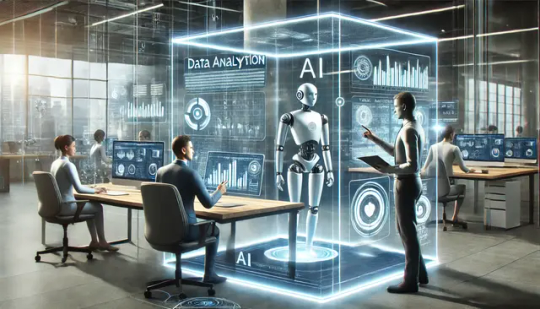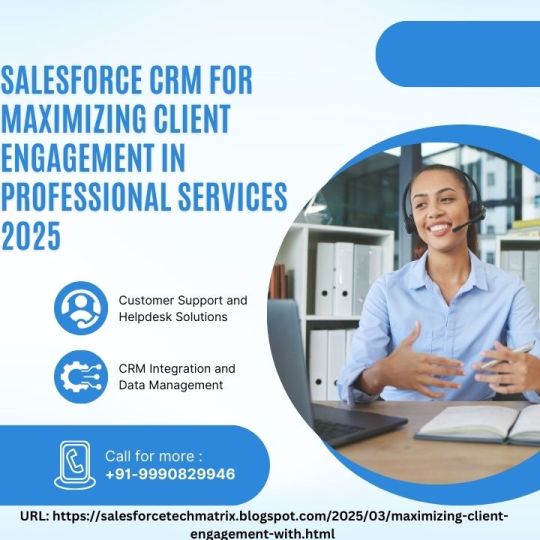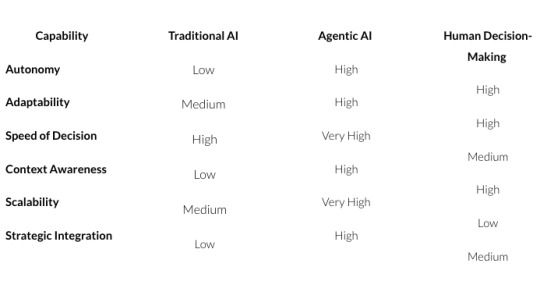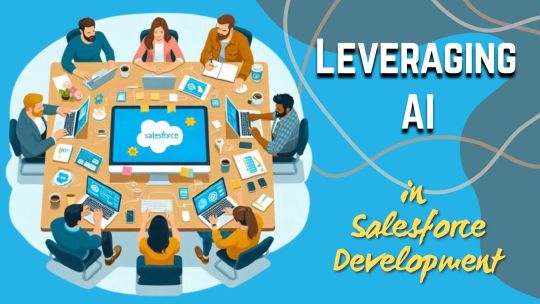#AI-Driven Workflow Automation
Explore tagged Tumblr posts
Text
Boosting Operational Efficiency with AI-Driven Workflow Automation and AI Enterprise Automation Tools

In today's fast-evolving digital landscape, organizations are under constant pressure to do more with less, faster, smarter, and more efficiently. Hire Workforce, a leader in workforce solutions, is addressing these challenges head-on with the implementation of AI-driven workflow automation and robust AI enterprise automation tools that redefine how businesses operate.
AI-driven workflow automation is transforming how tasks are assigned, tracked, and completed. At Hire Workforce, this technology has enabled a shift from traditional manual operations to intelligent systems that automate routine processes like data entry, scheduling, document management, and employee onboarding. As a result, businesses experience reduced human error, faster turnaround times, and better resource allocation.
What sets Hire Workforce apart is its strategic deployment of AI enterprise automation tools tailored for scalability and flexibility. These tools are designed to integrate seamlessly with existing systems across HR, finance, customer service, and operations. From predictive analytics that optimize workforce planning to intelligent chatbots that handle HR queries, the platform ensures that automation enhances, rather than replaces, human roles.
The benefits are far-reaching. Enterprises working with Hire Workforce report significant improvements in team productivity, lower operational costs, and enhanced decision-making through real-time data insights. These outcomes are especially vital for mid-to-large organizations aiming to remain agile in competitive markets.
Moreover, Hire Workforce emphasizes customization, offering AI automation solutions that align with each client’s specific operational needs and industry regulations. This client-centric approach ensures that the implementation of AI tools does not disrupt existing workflows but instead enhances them for long-term efficiency.
As companies continue to seek digital transformation, Hire Workforce is positioned as a forward-thinking partner delivering cutting-edge automation solutions. With AI-driven workflow automation and advanced AI enterprise automation tools, the company empowers organizations to focus more on strategic growth and less on manual bottlenecks.
0 notes
Text

Scaling Operations with AI: How ByteCore Solutions Boosted Efficiency by 40%
If you’ve ever wished your team could do more in less time without burning out, you’re not alone. For many companies, the pressure to grow quickly while staying efficient can feel like an impossible balancing act. ByteCore Solutions found themselves in exactly that position. As their business expanded, so did the complexity of their operations. They were managing more data than ever, but doing so with outdated processes that slowed everything down.
Rather than hiring more staff or continuing to patch problems with short-term fixes, ByteCore made a bold decision: they would turn to artificial intelligence to streamline how their company functioned. Through a well-planned strategy centered on AI-driven data workflow automation, ByteCore transformed their internal systems and achieved a 40% boost in efficiency. This isn’t a far-off tech fantasy; it’s a real story about how the right tools and mindset can unlock serious performance gains.

The Challenge
ByteCore Solutions was growing fast. The company had built a strong reputation in data analytics and digital transformation, helping clients across North America and Europe modernize their operations. But internally, things were becoming difficult to manage. With each new client came more data, more systems, and more manual work. Reports were created by hand, data was passed between teams without a clear process, and teams worked in silos. The result? Delays, inefficiencies, and a rising number of errors that frustrated both employees and clients.
It became clear that adding more people wouldn’t solve the problem. ByteCore needed a smarter solution, something that could keep up with their momentum and take pressure off their teams. They began looking into AI as a way to streamline data management with AI-driven data workflow automation. The idea wasn’t just to keep up with demand, but to get ahead of it with a system that could grow as they did.
The Solution
ByteCore partnered with a leading AI consultancy to assess its operational bottlenecks and design a solution tailored to their workflows. The first step was to map every manual and semi-automated process within the organization. This audit uncovered numerous tasks ripe for automation; from data extraction and validation to report generation and inter-departmental communications.
The team decided to implement an AI-driven data workflow automation platform built on a hybrid of natural language processing, machine learning, and robotic process automation. The goal was not to replace human workers but to empower them. Here’s how the transition unfolded:
Step 1: Intelligent Data Ingestion
The AI system was integrated with ByteCore’s CRM, ERP, and cloud storage solutions. It could ingest structured and unstructured data from multiple sources; emails, spreadsheets, databases, and even PDFs. Natural language processing allowed the system to interpret context, clean data automatically, and standardize it before moving it along the pipeline.
Step 2: Workflow Automation
Repetitive tasks like generating weekly performance dashboards or consolidating client data from different systems were automated. Instead of spending hours compiling data, employees received ready-to-analyze reports delivered directly to their dashboards. Machine learning models predicted patterns in data processing to further refine efficiency.
Step 3: Predictive Analytics Integration
Once basic workflows were automated, ByteCore integrated predictive analytics into its client offerings. The AI systems could now analyze trends and suggest strategic actions, giving the company a new edge in consulting. What once took days of data crunching now took minutes; decisions were made faster and with more confidence.
Step 4: Continuous Learning and Feedback
Unlike static systems, ByteCore’s AI platform continuously learned from user behaviour. Employees could give feedback on report accuracy or suggest improvements. Over time, the AI adapted to preferences and became increasingly accurate and intuitive.
“What’s dangerous is not to evolve.”
— Jeff Bezos (Founder of Amazon)
The Results
Within the first six months of deployment, ByteCore Solutions saw measurable improvements. The numbers speak for themselves:
40% Increase in Operational Efficiency: Tasks that once took multiple employees hours to complete were now handled in minutes.
30% Reduction in Human Error: Automated data validation reduced costly mistakes.
25% Improvement in Employee Satisfaction: Freed from repetitive tasks, teams could focus on creative problem-solving and client strategy.
Faster Client Turnaround: Response times decreased significantly, improving client retention and satisfaction.
Most importantly, the AI systems didn’t replace jobs; they redefined them. ByteCore used the opportunity to reskill staff, offering training in AI supervision, data science, and analytics. Employees felt invested in and excited about the technological shift.
Lessons Learned: What Other Companies Can Take Away
ByteCore’s success wasn’t just about buying the right technology; it was about building a culture ready for growth. Here are some key takeaways for companies looking to streamline data management with AI:
1. Start with the Problem, Not the Technology
Many companies make the mistake of adopting AI for AI’s sake. ByteCore’s leadership focused first on identifying inefficiencies. The AI solution was tailored to real needs; this alignment made adoption smoother and results more tangible.
2. Choose Scalable Tools
AI solutions should be adaptable to future needs. ByteCore’s system was modular, allowing the company to add capabilities without overhauling the entire infrastructure. This scalability proved crucial as the business continued to grow.
3. Focus on Human-AI Collaboration
The goal wasn’t to replace humans but to elevate their roles. By involving employees early and often, ByteCore ensured buy-in and avoided resistance. Training programs further helped staff feel empowered rather than displaced.
4. Monitor, Measure, and Iterate
AI isn’t a set-it-and-forget-it solution. ByteCore maintained a feedback loop between users and developers. This allowed the system to evolve organically, staying aligned with business needs.
The Future
Having successfully implemented AI-driven data workflow automation, ByteCore Solutions is now exploring other AI-driven innovations, including customer sentiment analysis, real-time project forecasting, and autonomous quality assurance systems. The company has positioned itself as a trailblazer not just in using AI, but in weaving it seamlessly into the fabric of its operations.
What started as a response to inefficiency has become a cornerstone of ByteCore’s identity. The lesson is clear: when AI is used thoughtfully, it doesn’t just improve operations; it transforms them. As more companies look to scale in a crowded and complex market, ByteCore’s story stands as a compelling example of what’s possible when human ingenuity meets machine intelligence.
Whether you’re a startup drowning in spreadsheets or a legacy business looking to modernize, the tools to streamline data management with AI are more accessible than ever. The question is no longer whether you can afford to invest in AI, it’s whether you can afford not to.
Learn more about DataPeak:
#datapeak#factr#saas#technology#agentic ai#artificial intelligence#machine learning#ai#ai-driven business solutions#machine learning for workflow#ai solutions for data driven decision making#ai business tools#aiinnovation#datadrivendecisions#dataanalytics#data driven decision making#data analytics#digitaltools#digital technology#digital trends#ai platform for business process automation#ai business solutions#ai driven business solutions#ai for business efficiency
0 notes
Text
#mindset meets automation#everyday ai for real people#brash prompt playbook#solopreneur strategy#decision making tools#ai for self talk#beat overthinking#workflow psychology#everyday ai#everyday ai tools#prompt driven productivity#confidence builder#minimalist mindset#brash digital dispatch#stay brash
0 notes
Text
How to Build and Interpret a Predictive Dashboard to Drive Better Decisions: See the Future of Your Business… Without a Crystal Ball
How to Build and Interpret a Predictive Dashboard to Drive Better Decisions See the Future of Your Business… Without a Crystal Ball Let’s be honest, nobody has time to scroll through spreadsheets, decode mystery metrics, or guess where the business is headed. That’s why predictive dashboards powered by AI aren’t just nice-to-have, they’re your new co-pilot for smarter, faster, and stress-free…
#AI automation for entrepreneurs#AI automation for service-based businesses#AI business strategy#AI strategies for business growth#AI tools for solopreneurs#AI workflow optimization#AI-driven content creation for entrepreneurs#AI-powered business coaching#Business Growth#Business Strategy#Entrepreneur#Entrepreneurship#How to implement AI in small business operations#Lori Brooks#Productivity#Small business AI tools#Technology Equality#Time Management
0 notes
Text
OnGrid Unveils Instant BGV to Supercharge Hiring Workflows
The Need for Speed in Hiring
In a hyper-competitive job market, companies can’t afford slow background checks. Traditional background verification processes often take days—sometimes even weeks—causing onboarding delays and candidate drop-offs. That’s where instant BGV comes in as a game-changer.
What Is Instant BGV?
Instant BGV refers to a digital-first, technology-driven approach to background verification that delivers results in minutes instead of days. With OnGrid’s newly launched instant BGV solution, companies can now verify a candidate’s identity, address, criminal record, employment history, and even face match—all within a few clicks.
Key Features of OnGrid’s Instant BGV
AI-Powered OCR: Automatically extracts and validates candidate data from uploaded documents.
Real-Time Checks: Enables instant identity, address, employment, and criminal verifications.
Bulk Upload & API Integration: Designed to handle high-volume hiring needs.
Data Privacy & Compliance: Built with enterprise-grade encryption and adherence to India’s DPDP Act.
Benefits for Employers and Candidates
With OnGrid’s instant BGV, hiring teams save up to 60% of their time. Candidates enjoy a seamless onboarding experience with less waiting and more transparency. The system also minimizes manual errors, ensures better compliance, and supports scalable growth for enterprises and startups alike.
The Future of Hiring Is Instant
As hiring accelerates across sectors like tech, gig work, logistics, and BFSI, solutions like OnGrid’s instant BGV are not just helpful—they’re essential. Fast, reliable, and compliant background checks are now just a few clicks away.
#instant BGV#background verification#OnGrid#hiring workflows#HR technology#digital onboarding#candidate verification#employee background check#real-time BGV#AI in hiring#bulk verification#onboarding automation#remote hiring#BGV API#tech-driven recruitment
0 notes
Text
Discover the Best AI Automation Tools for Your Business
Artificial intelligence is revolutionizing the way businesses operate, and choosing the right automation tools is key to unlocking its full potential. According to MIT research, companies that strategically implement AI-driven automation see a significant boost in productivity. For business leaders, the challenge isn’t deciding whether to adopt AI automation tools — it’s determining which tools…
#AI-driven processes#Artificial intelligence tools#Automation technology#Business automation solutions#Machine learning software#Smart business automation#Workflow optimization tools
0 notes
Text
#AI applications in agile and hybrid project management#Smart automation tools for efficient workflow execution#Real-world case studies of AI-driven project success#Spotify
0 notes
Text
AI Colleagues Are Here: How Agentic Intelligence is Reshaping Workplaces
You arrive at the office, and before you even touch your desk, the day’s work is already in motion. Reports are prepared, emails are drafted, meetings are scheduled, and client follow-ups are handled—all without your intervention. It feels as if an invisible assistant has been working behind the scenes, anticipating your needs and executing tasks seamlessly. This isn’t a glimpse into the distant future but a reality shaped by agentic AI, a new generation of artificial intelligence that doesn’t just respond to commands but proactively thinks, plans, and acts, transforming the modern workplace in ways once thought impossible.

#AI in workplaces#agentic AI#AI automation#workplace automation#AI-powered assistants#future of work#artificial intelligence in business#AI-driven workflows#enterprise AI#AI job impact
0 notes
Text

Discover how Salesforce helps professional services enhance client engagement, automate workflows, and boost ROI in 2025 with AI-powered CRM solutions.
Read more: https://salesforcetechmatrix.blogspot.com/2025/03/maximizing-client-engagement-with.html
#Salesforce for professional services#client engagement strategies#Salesforce CRM 2025#Salesforce implementation partner#AI-driven CRM tools#client retention Salesforce#automate workflows#Salesforce benefits for consulting firms#professional services CRM#Salesforce Marketing Cloud
0 notes
Text

Agentic AI: The Next Evolution of Autonomous Business Systems
As markets evolve and competition intensifies across every industry, organizations are under immense pressure to find smarter, faster, and more adaptable solutions to stay ahead. One of the most promising developments in artificial intelligence is the rise of Agentic AI. Unlike traditional AI systems that operate under rigid instruction sets, Agentic AI exhibits autonomy, adaptability, and decision-making capabilities that mirror human-like behaviour. This transformative leap is poised to redefine how businesses operate, optimize, and scale.

What is Agentic AI?
Agentic AI refers to systems designed to act as autonomous agents capable of perceiving their environment, making decisions, and executing actions in pursuit of specific goals. These AI agents are not merely reactive; they are proactive, strategic, and capable of learning over time. While traditional AI relies on explicit programming to function within predefined parameters, Agentic AI systems exhibit goal-oriented behaviour and can operate independently with minimal human intervention.
Agentic AI is built upon advancements in several core areas of AI research:
Reinforcement Learning: Enables agents to learn optimal behaviours through trial and error.
Cognitive Architectures: Provides frameworks that mimic human decision-making processes.
Multi-Agent Systems: Facilitates collaboration and competition between multiple autonomous agents.
Natural Language Processing (NLP): Allows agents to understand and communicate using human language.
Together, these technologies empower Agentic AI to engage in complex tasks such as strategic planning, resource allocation, customer interaction, and even creative problem-solving.
Key Characteristics of Agentic AI
Autonomy: Agentic AI systems operate independently, requiring minimal human oversight once objectives are defined.
Goal-Directed Behaviour: These systems pursue high-level objectives rather than executing narrow, task-specific instructions.
Adaptability: They adjust strategies and actions based on real-time data and evolving conditions.
Interactivity: Agentic AI can engage with users and systems through natural language and interfaces.
Self-Improvement: Through continuous learning and feedback, Agentic AI can enhance its performance over time.
Business Systems Powered by Agentic AI
Agentic AI is not just transforming individual workflows; it’s redefining entire business systems from the ground up. These agents are evolving from operational tools into dynamic components of enterprise architecture, capable of orchestrating complex interdependencies across departments.
1. Autonomous Business Operations
Agentic AI can manage end-to-end business processes with little to no human intervention. These agents are integrated into enterprise resource planning (ERP), supply chain management (SCM), and customer relationship management (CRM) systems, turning them from static data repositories into proactive, decision-making ecosystems. For example, a procurement agent can dynamically renegotiate supplier contracts based on market fluctuations and risk analysis, while another manages compliance updates across jurisdictions.
2. Customer Experience Systems
By embedding agentic models within customer-facing systems, businesses can build AI-powered service layers that anticipate needs, resolve issues, and deliver personalized experiences. Unlike static chatbots or scripted IVRs, Agentic AI can traverse multiple customer touchpoints (email, chat, voice, social) and deliver consistent, context-aware support.
3. Sales and Marketing Platforms
Agentic AI enables continuous experimentation and optimization in marketing systems. These agents autonomously test messaging, allocate budgets across platforms, and modify content strategies based on user engagement and real-time analytics. In CRM systems, they identify upsell opportunities, draft personalized communications, and coordinate multi-channel campaigns, essentially becoming an autonomous marketing operations layer.
4. Finance and Risk Management
In finance departments, Agentic AI is reshaping systems like forecasting, budgeting, and compliance monitoring. Agents can generate real-time cash flow projections, detect anomalies in expense reports, or autonomously trigger fraud investigation protocols. As finance systems become more modular and API-driven, Agentic AI acts as the "glue" coordinating across them, making intelligent decisions without waiting on batch processes or human review.
5. Human Capital Systems
Talent management platforms infused with Agentic AI can manage workforce planning, skill development, and internal mobility. For example, an internal agent could monitor team workloads, project deadlines, and employee engagement metrics, and then recommend internal transfers or hiring actions. These agents don’t just automate HR tasks; they actively shape the workforce strategy.
The Strategic Layer: Agentic AI as Enterprise Orchestrator
Perhaps the most transformative potential lies in Agentic AI’s ability to operate as an orchestration layer across disparate business systems. Imagine a "Chief Operations Agent" that interfaces with finance, sales, HR, and logistics, balancing priorities, identifying cross-functional inefficiencies, and reallocating resources in real time.
Such a system could:
Adjust pricing models based on supply chain costs and customer demand.
Initiate hiring sprees based on projected sales pipeline activity.
Re-prioritize product development sprints based on customer feedback and competitor moves.
These agents don’t just automate; they synchronize and strategize, providing a layer of continuous enterprise optimization.
“Software is eating the world, but AI is going to eat software.” — Jensen Huang (CEO of NVIDIA)
The Benefits of Agentic AI in Business
The integration of Agentic AI into business systems offers a multitude of advantages:
Scalability: Agentic AI can manage increased workloads without proportional increases in cost or human resources.
Efficiency: By automating repetitive and complex tasks, businesses can redirect human talent to higher-value initiatives.
Resilience: These systems can quickly adapt to disruptions, making businesses more agile and robust.
Data Utilization: Agentic AI can analyze and act upon massive datasets far beyond human capabilities, uncovering hidden insights and opportunities.
Continuous Optimization: With the ability to learn and evolve, Agentic AI ensures that processes are constantly improving.
Comparison: Traditional AI vs. Agentic AI vs. Human Decision-Making

Challenges & Considerations
While the potential of Agentic AI is enormous, its adoption also presents challenges that businesses must navigate carefully:
Ethical Concerns: Autonomy raises questions about decision accountability, data use, and fairness.
Security Risks: Autonomous agents must be hardened against manipulation and breaches.
Integration Complexity: Replacing or augmenting legacy systems can be resource-intensive.
Governance and Control: Clear frameworks must define when and how AI agents act independently.
Overcoming these challenges requires a combination of strong internal governance, AI ethics frameworks, and next-generation IT infrastructure.
The Future of Agentic AI
The trajectory of Agentic AI suggests a future where businesses function as decentralized networks of intelligent agents collaborating in real time. Imagine a digital enterprise where finance, logistics, customer service, and strategy are orchestrated not by departments, but by autonomous agents that seamlessly integrate and adapt to changing circumstances.
We are likely to see the rise of meta-agents, which are AI systems that manage other agents, coordinate cross-domain workflows, and enforce organizational goals. These will serve as the AI equivalent of the executive suite, translating strategy into dynamic execution.
Additionally, the democratization of Agentic AI through low-code/no-code platforms will empower non-technical users to deploy and manage AI agents without technical barriers; further accelerating innovation across all levels of an organization.
We’re standing at the cusp of a new industrial revolution, one not powered by steam or silicon, but by intelligent autonomy. Agentic AI is more than just another technological advancement; it's a reimagining of how work gets done. As these systems become more capable, their role in business will shift from tool to collaborator and from support system to strategic partner.
Embracing Agentic AI requires more than investment. It demands systems thinking, executive sponsorship, and a willingness to challenge the status quo.
Learn more about DataPeak:
#factr#datapeak#saas#technology#agentic ai#artificial intelligence#machine learning#ai#ai-driven business solutions#machine learning for workflow#ai solutions for data driven decision making#ai business tools#ai agents#digital technology#digital trends#digitaltools#datadrivendecisions#data driven decision making#dataanalytics#ai platform for business process automation#ai for business efficiency#ai business solutions#ai driven business solutions#business#ai technology#techinnovation
0 notes
Text

Adobe Orchestrator AI is a cutting-edge AI agent designed to revolutionize automation, creativity, and digital workflows. With advanced machine learning, it seamlessly integrates AI-driven processes, enhancing efficiency for businesses and creators. Stay ahead with the future of AI-powered automation!
#Adobe Orchestrator AI#AI automation#Adobe AI tools#AI-powered workflows#Future of AI#AI in business#AI content creation#AI-driven automation#Smart AI agents#Digital transformation#artificialintelligence#Latest update ai#ai update#ailatestupdate#ai news
1 note
·
View note
Text
Revolutionising Estimations with AI: Smarter, Faster, and More Reliable Predictions
Revolutionising estimations with AI transforms project planning by enhancing accuracy and reducing uncertainty. Unlike traditional methods prone to bias, AI-driven estimations leverage historical data and predictive analytics for more reliable forecasts.
Revolutionising estimations with AI is transforming how teams predict timelines, allocate resources, and improve project planning. Traditional estimation methods often rely on human intuition, which can introduce biases and inconsistencies. AI offers a data-driven approach that enhances accuracy, reduces uncertainty, and allows teams to focus on delivering value. If you’re interested in…
#agile#AI#automation#data-driven decisions#Efficiency#estimations#Forecast.app#forecasting#Jira#LinearB#machine learning#predictive analytics#Project management#risk management#software development#workflow optimization
0 notes
Text
How to Use AI as a Brainstorming Tool for Faster, Better Ideas
How to Use AI as a Brainstorming Tool for Faster, Better Ideas Never Start with a Blank Page Again (Seriously) You know that moment, the one where your mind goes blank, your screen’s taunting you with that blinking cursor, and your coffee’s already cold? Yeah, we’ve all been there. But what if I told you that AI can help you skip the mental block and start creating faster? Whether you’re…
#AI automation for entrepreneurs#AI automation for service-based businesses#AI business strategy#AI strategies for business growth#AI tools for solopreneurs#AI workflow optimization#AI-driven content creation for entrepreneurs#AI-powered business coaching#Business Growth#Business Strategy#Entrepreneur#Entrepreneurship#How to implement AI in small business operations#Lori Brooks#Productivity#Small business AI tools#Technology Equality#Time Management
0 notes
Text
Tindle Newspapers transforms ad creation workflows with Mediaferry
Tindle Newspapers, a leading UK-based publishing company, has transformed its ad creation workflow by integrating Mediaferry, a cloud-based platform by EKCS.
Tindle Newspapers has streamlined the ad production process, with Mediaferry playing a pivotal role in improving the ad creation workflow. Mediaferry enabled Tindle to collaborate better with their customers. Its user-friendly interface has advanced features, including automated version control and dynamic digital templates for different formats. Ads can be created, modified, and signed off quickly. This enables Tindle Newspapers to meet tight deadlines and launch campaigns faster.
Tariq Husain, architect of Mediaferry and co-founder of EKCS, said, “The main challenge we resolved was that the ad creation process was time-consuming. Many rounds of communication between the sales, production teams, and clients often led to delays, late deadlines, and a lack of real-time client involvement. Mediaferry enabled clients to collaborate more closely and approve ads quickly.” Scott Wood, Managing Director at Tindle Newspapers, says, “Mediaferry has completely transformed our ad production process, allowing us to collaborate more effectively with clients and deliver high-quality campaigns faster than ever before.”
Mediaferry’s platform enables centralised management of multimedia ad campaigns. It enables designers, sales teams, and clients to collaborate in real-time. Clients can give instant feedback, request changes, and approve versions through the platform. This accelerates approvals and reduces the need for revisions.
The integration of Mediaferry has improved Tindle Newspapers’ operational efficiency. Clients appreciate Mediaferry’s transparency and responsiveness.
#ad creation workflow#creative agency management software#creative automation#AI-driven creative automation
1 note
·
View note
Text
Explore how AI is transforming project management software by enhancing predictive analytics, automating routine tasks, improving risk management, and facilitating better decision-making. AI-driven tools optimize workflows, forecast project outcomes, and help teams collaborate more effectively. Learn how leveraging AI can lead to improved project success, efficiency, and competitive advantage in today’s fast-paced business environment.
#AI in project management#predictive analytics#workflow automation#project success#risk management#decision-making#AI software#AI-driven tools#business efficiency#project management solutions.
0 notes
Text

Leveraging AI in Salesforce Development
Artificial Intelligence (AI) is revolutionizing Salesforce development by infusing intelligence into traditional CRM processes. AI allows Salesforce to evolve from a static data management platform into a dynamic, insight-driven system that can predict, recommend, and automate key functions. With AI, Salesforce development is now more about building solutions that are not just reactive but proactive.
Know more at: https://www.cyberswift.com/blog/leveraging-ai-in-salesforce-development/
#generative ai in salesforce#salesforce ai cloud#salesforce einstein gpt#ai-powered crm solutions#bill cipher#salesforce automation with ai#predictive analytics in salesforce#ai-driven customer insights#ai-enhanced salesforce workflows#salesforce lightning and ai integration#chatbots and salesforce crm#salesforce consulting services#salesforce crm solutions#custom salesforce development#salesforce lightning development#salesforce app development#salesforce api integration#salesforce cloud services#salesforce automation solutions#salesforce migration services#salesforce support and maintenance#low-code salesforce development#ai-powered salesforce solutions#iot integration with salesforce#salesforce blockchain integration
1 note
·
View note